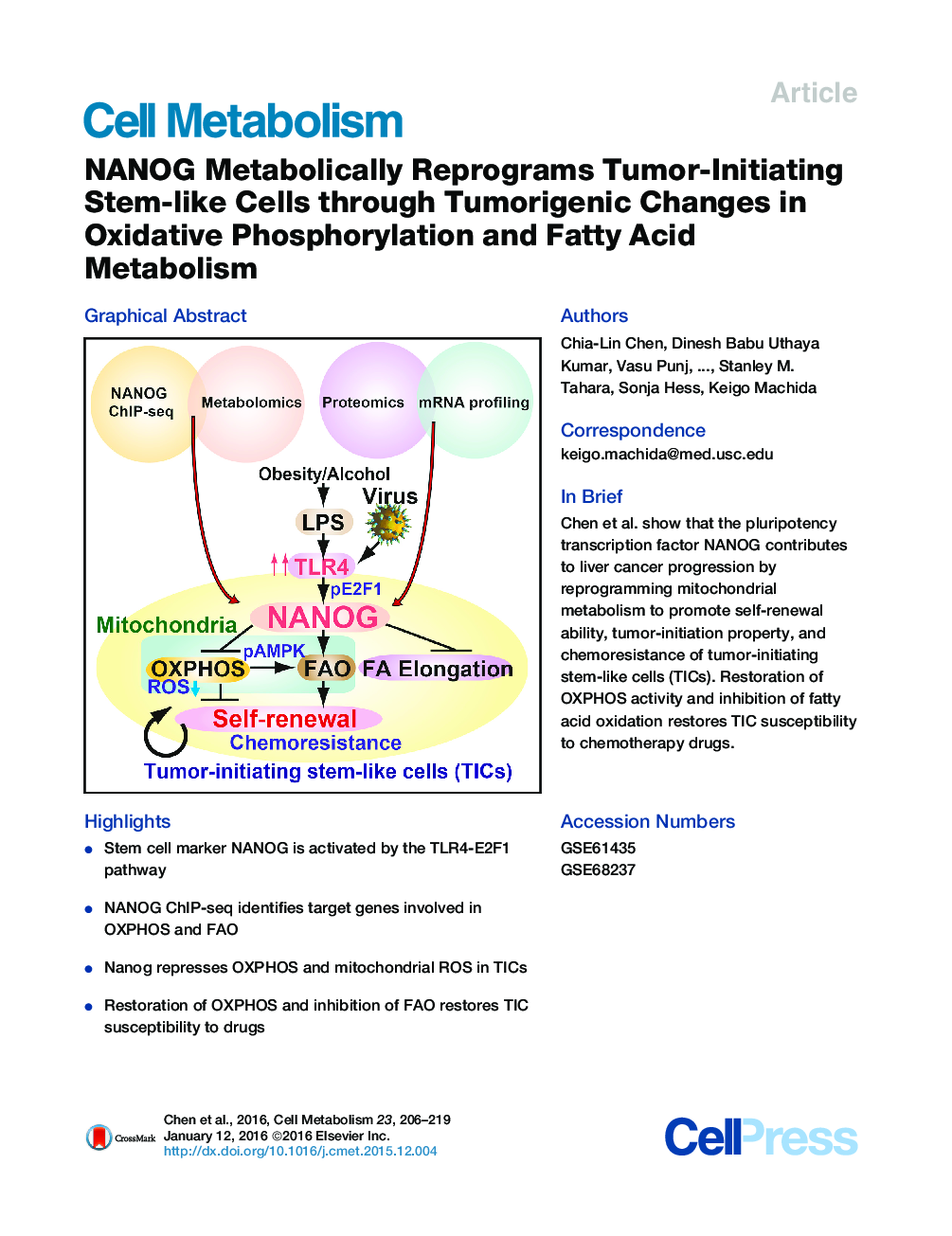| Article ID | Journal | Published Year | Pages | File Type |
|---|---|---|---|---|
| 2792587 | Cell Metabolism | 2016 | 14 Pages |
•Stem cell marker NANOG is activated by the TLR4-E2F1 pathway•NANOG ChIP-seq identifies target genes involved in OXPHOS and FAO•Nanog represses OXPHOS and mitochondrial ROS in TICs•Restoration of OXPHOS and inhibition of FAO restores TIC susceptibility to drugs
SummaryStem cell markers, including NANOG, have been implicated in various cancers; however, the functional contribution of NANOG to cancer pathogenesis has remained unclear. Here, we show that NANOG is induced by Toll-like receptor 4 (TLR4) signaling via phosphorylation of E2F1 and that downregulation of Nanog slows down hepatocellular carcinoma (HCC) progression induced by alcohol western diet and hepatitis C virus protein in mice. NANOG ChIP-seq analyses reveal that NANOG regulates the expression of genes involved in mitochondrial metabolic pathways required to maintain tumor-initiating stem-like cells (TICs). NANOG represses mitochondrial oxidative phosphorylation (OXPHOS) genes, as well as ROS generation, and activates fatty acid oxidation (FAO) to support TIC self-renewal and drug resistance. Restoration of OXPHOS activity and inhibition of FAO renders TICs susceptible to a standard care chemotherapy drug for HCC, sorafenib. This study provides insights into the mechanisms of NANOG-mediated generation of TICs, tumorigenesis, and chemoresistance through reprogramming of mitochondrial metabolism.
Graphical AbstractFigure optionsDownload full-size imageDownload high-quality image (254 K)Download as PowerPoint slide
